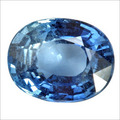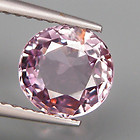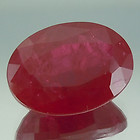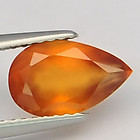 |
| Fine Ruby, Top Color, Clarity & Cut |
The gemstone business probably has more than its share of fraud, rip-offs and scams. It takes specialized knowledge to determine the authenticity of a natural gem. It is not difficult for a dealer to pass off a synthetic gem as natural, or sell an inexpensive gem such as kyanite as a more expensive sapphire. Even examining the gems in person is unlikely to protect the consumer against fraud, since sophisticated gemological instruments are usually required to detect synthetic or treated gems.
Having noted that, you might be surprised to hear that outright fraud of this sort is actually not common at all in the gemstone business. The reason is that dealers who engage in blatantly fraudulent practices don't survive long in the gemstone business.
Smart consumers prevent most outright fraud by buying only from dealers who have their gems certified by independent gemological laboratories. These labs are expert at gem identification and use high-tech instruments to determine if gemstones are natural or have been treated by various methods.
However, it is important to understand that gemological labs mainly do quantitative analysis -- they can tell you that a particular stone is a natural unheated sapphire, but they can't tell you if the stone is a high quality specimen or even if it is gem quality. They also won't give you any idea of the value of your stone.
Most of the fraud and rip-offs in the gemstone business have to do with qualitative issues, where a poor quality stone is sold as a high quality gem. This kind of fraud is unfortunately all too common, particularly among dealers who sell on price. When you see gems on offer at what seem to be exceptionally cheap prices, that is the time to raise the fraud alert.
 |
 |
 |
 |
|
Windowed, |
Weak Color, Poorly Cut Spinel |
Badly-Cut Fracture-Filled Ruby |
Heavily Included Spessartite |
The most common gemstone fraud is offering poorly cut or included gems as fine gemstones. Though the prices asked for these gems is well below the market price for high quality gems, these low quality stones in fact have little or no value in the market. The same is true for natural gems which have poor or mediocre color -- jewelers and dealers in fine gems will not touch these stones. But some dealers offer these leftovers to unwary buyers as "fine gems" at what seems to be an attractive price.
Another example is selling heavily-treated gems to consumers who don't fully understand the implications of the treatment. For example, some dealers sell ruby which has been fracture-filled with lead glass. But it is not enough just to disclose the treatment. The fact is that these rubies are not durable at all, and the glass filling is easily affected by household chemicals and routine heating by a bench jeweler during the setting process. These fracture-filled rubies should be not be purchased at any price. In fact the best gem labs now identify these stones not as ruby but as "composite ruby" or "hybrid ruby" to indicate that they cannot fairly be compared with natural ruby.
A gem dealer's reputation is his most important asset. This is a business that is built on trust. Dealers who engage in fraudulent practices by offering low quality stones as fine gems should be exposed. Fortunately internet consumers are vigilant and report dealers they suspect of fraudulent practices. There are well known consumer sites that report rip-offs and unethical practices. Some consumers have gemological. knowledge and are generous enough to share their expertise in these forums. Like any other product in the market, you usually get what you pay for. But in the case of gemstones, fine gems have lasting value while low quality stones are essentially worthless.